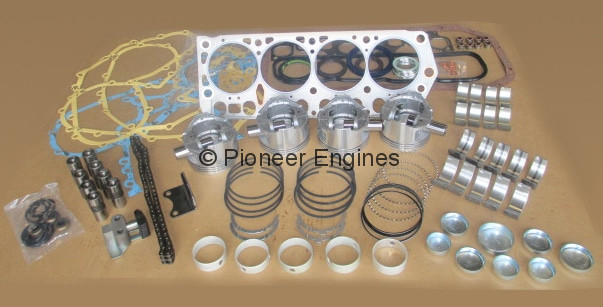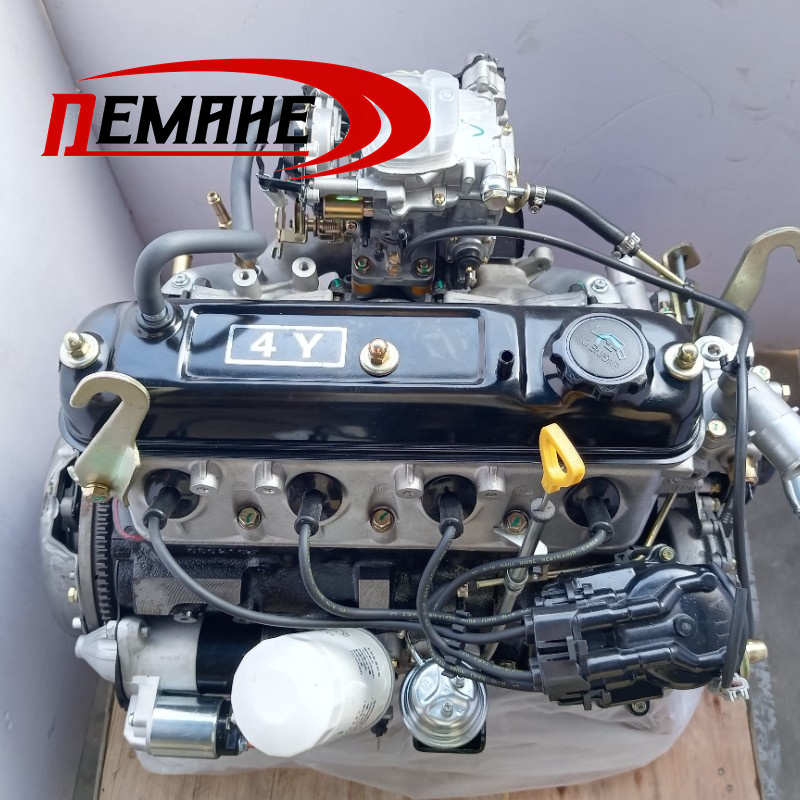The Ultimate Overview to the Engine: Key Insights for each Automobile Enthusiast
Understanding the engine is fundamental for any automotive enthusiast, as it acts as the heart of the lorry and determines its efficiency. This overview gives a complete examination of engine makeup, kinds, and the technicians behind their operation, including the innovative modern technologies that are reshaping the automotive landscape. It highlights the essential nature of maintenance methods that can substantially affect an engine's life-span. However, the intricacies of engine characteristics and the latest innovations in technology present questions that warrant additional expedition. What might these insights disclose concerning the future of automobile engineering?
Makeup of an Engine
Recognizing the composition of an engine is crucial for any type of automobile fanatic aiming to dig deeper into automotive technicians. An internal burning engine largely contains numerous crucial components that function in unison to convert fuel into power.
At the heart of this system lies the cyndrical tube block, which houses the cylinders where combustion takes place. Piston activity within these cylinders is helped with by the crankshaft, which converts linear activity into rotational power. Furthermore, the camshaft plays an important role in controlling the opening and closing of the engine's valves, ensuring correct air-fuel mixture intake and exhaust gas expulsion.
Various other crucial elements include the gas system, which provides the engine with the necessary gas, and the ignition system, accountable for launching combustion - 4y engine. The cooling and lubrication systems are additionally important, keeping ideal operating temperatures and decreasing rubbing, specifically
Engine Types and Configurations
A varied variety of engine kinds and configurations exists, each offering one-of-a-kind benefits and negative aspects customized to various driving requirements and preferences. One of the most common engine kinds include inline, V, level, and rotating setups.
Inline engines, including cylinders set up in a single line, are understood for their simpleness and performance. They are commonly located in small cars, supplying a balance of power and economic climate. V engines, identified by their two financial institutions of cyndrical tubes set up in a V form, supply higher performance and smoother operation, making them popular in sports and high-end cars and trucks.
Flat engines, or boxer engines, have flat opposed cyndrical tubes, which add to a lower facility of gravity, enhancing lorry stability. These are generally seen in brands like Subaru and Porsche.
Rotating engines, although less common, utilize an one-of-a-kind design with a triangular blades and deal high power-to-weight ratios. They master lightweight and portable applications, primarily seen in Mazda lorries.
Each engine kind serves details efficiency characteristics, weight distributions, and gas effectiveness, making certain that vehicle enthusiasts can select the best engine setup to match their driving style and lorry requirements.

Exactly How Engines Function
Engines, regardless of their type or configuration, operate fundamental concepts that control their performance and efficiency. At their core, engines transform fuel right into power via a collection of regulated explosions or compressions. This process usually entails 4 major strokes: intake, power, exhaust, and compression.
Throughout the consumption stroke, the engine reels in a mixture of air and fuel. The compression stroke follows, where the combination is compressed in the cylinder, increasing its temperature and pressure. In more information the power stroke, a stimulate stirs up the pressed combination (in gasoline engines) or the combination fires up spontaneously (in diesel motor), causing a fast development of gases that presses the piston down. Lastly, the exhaust stroke gets rid of the invested gases from the cylinder.
The effectiveness of an engine is influenced by various aspects, consisting of the layout of the burning chamber, the kind of fuel utilized, and the accuracy of the engine's parts. Understanding these basic principles is critical for cars and truck fanatics that seek to appreciate the intricate auto mechanics behind their cars, in addition to for those intending to improve efficiency with alterations and tuning.
Innovations in Engine Technology
Recently, innovations in engine technology have actually dramatically changed the automobile look at here landscape, boosting both performance and ecological sustainability. One of the most remarkable developments is the growth of turbocharging and supercharging, which permits smaller sized engines to produce higher power results without sacrificing gas effectiveness. This has caused an increase in the popularity of downsized engines, providing makers with the ability to fulfill stringent emissions guidelines while maintaining efficiency criteria.
Additionally, hybrid and electrical powertrains are reshaping the engine standard. Hybrid systems combine internal combustion engines with electric motors, maximizing fuel intake and decreasing emissions. Completely electrical lorries (EVs) remove the combustion engine completely, relying upon advanced battery innovation to provide instant torque and outstanding velocity.
In addition, the integration of artificial intelligence and artificial intelligence in engine monitoring systems enables real-time optimization of performance criteria, boosting effectiveness and responsiveness. Technologies such as variable shutoff timing and direct fuel injection better fine-tune burning processes, making the most of power outcome while lessening waste.
As the automotive market continues to evolve, these advancements in engine modern technology will certainly play an important duty fit the future of mobility, focusing on both performance and sustainability.
Upkeep Tips for Fanatics
Preserving an engine is as important as the advancements that boost its performance. Normal upkeep not just lengthens the life of your engine but likewise makes sure optimal efficiency. Begin with regular oil modifications, following the supplier's recommendations for oil kind and adjustment periods. Tidy oil lubes engine components properly, avoiding deterioration.
Replace and check air filters regularly to ensure proper air flow, which is vital for combustion efficiency. A stopped up air filter can bring about reduced performance and increased gas intake. Likewise, keep track of the coolant levels to protect against overheating, and change coolant according to the solution routine.

Verdict
To conclude, an my explanation extensive understanding of engine anatomy, types, and technicians is necessary for auto lovers. The expedition of developments such as turbocharging and hybrid systems highlights the developments in performance and effectiveness. Normal upkeep practices, including oil adjustments and air filter checks, are essential for making certain optimal engine performance and durability. Proficiency of these principles cultivates a deeper gratitude for engine characteristics and improves the overall driving experience.

Engines, regardless of their kind or setup, run on fundamental principles that regulate their efficiency and efficiency. In the power stroke, a trigger ignites the pressed combination (in gasoline engines) or the mixture sparks spontaneously (in diesel engines), resulting in a fast expansion of gases that pushes the piston down.In current years, advancements in engine technology have significantly changed the automotive landscape, enhancing both performance and ecological sustainability.